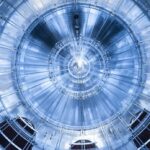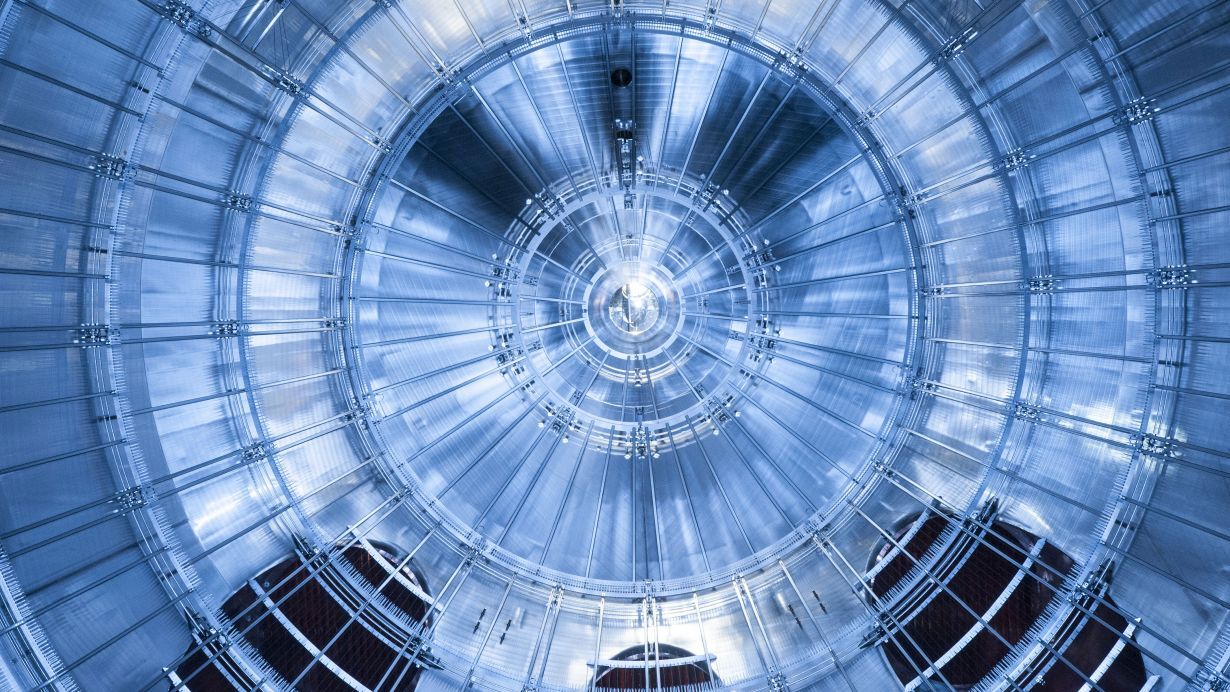In the observable Universe, the matter is made up of molecules. These are themselves made of much smaller particles called atoms. Electrons, protons and neutrons are the fundamental building blocks of atoms. Apart from these particles, there are many other particles that make up the entire ecosystem of the standard model. Neutrinos are subatomic particles that have similar properties to electrons but have no electric charge. They have very little mass, which can be even considered zero. They are one of the most common particles in the cosmos. As they rarely interact with matter, they are extremely challenging to observe. In the presence of nuclear forces, neutrinos and electrons behave identically. They both interact with the weak nuclear force, but they are not involved in the strong nuclear force.
Most of the observable neutrinos detected from the Earth are predominantly from nuclear reactions happening in the Sun. Several types of radioactive decay generate neutrinos. Here are some of the important processes involved in the creation of these elusive particles.
- Natural reactions that occur in the core of a star or massive stellar bodies.
- Supernova explosion.
- Beta-decay of hadrons or atomic nuclei.
- The spin-down of a neutron star.
- Collision of accelerated particle rays or cosmic rays with atoms.
- Nuclear reactions in particle accelerators, nuclear reactors, or nuclear bombs.
Enrico Fermi popularised the word ‘neutrino’. It means ‘little neutral one’ in Italian. The symbol ν or nu represents these particles. Neutrinos can be different depending on their masses, energies and flavours.
Now let us explore six unique facts about neutrinos.
Invisible neutrinos
Neutrinos are very hard to detect. On average probability, about one solar neutrino interacts with a person’s body in the entire lifetime. The largest working neutrino detector is Super Kamiokande-III. This Japanese particle detector carries 50,000 tons of water to react with neutrinos.
Supernovae and neutrinos
Supernovae are the strongest and most frequent known source of neutrinos in the MeV energy range. Neutrinos are produced in the supernova’s core. They are critical in the processes of stellar collapse and explosion. Thus, supernovae are among the significant astronomical events to study the characteristics of these elusive particles. A sudden massive surge of neutrinos can be considered the sign of a nearby supernova explosion. In this case, just before the stellar explosion, a burst of neutrinos will invade the Earth’s atmosphere. This will help to plan the observation of supernova explosions.
Dark matter
Neutrinos are the most probable candidate for hot dark matter. Apart from the basic theoretical similarities, both entities do not absorb or emit electromagnetic radiation. Thus, making them invisible to most optical telescopes.
Neutrino propagation
Neutrinos and photons are produced from the core of the Sun. Neutrinos take far less time than photons for point to point displacement. This superpower is due to the nonchalant nature of neutrinos. A huge amount of neutrinos travels through the Earth, hardly interacting with it.
Presence of neutrinos
Neutrinos are the most common particles in the Universe, just after photons. The Sun emanates billions of neutrinos per second per square centimetre to the Earth. About trillions of them directly pass through one’s body every second. The Sun functions as a neutrino factory. It is generated in the core through nuclear fusion. Various nuclear reactions occur in the core of the Sun. It is called the proton-proton chain. In this reaction, two protons link and form deuterium, releasing neutrinos and positrons.
The mass of neutrinos
The mass of neutrinos is very bizarre. Even though they are among the lightest particles in the Universe, they are responsible for above 20% of the total mass of the observable Universe. The physicist Wolfgang Pauli put forward pioneering theories on neutrinos. At first, he thought them to be massless. As new theories were developed, they were assigned a small discrete mass. The upper threshold of neutrino mass is 0.086 Ev, about six million times less heavy than an electron.








